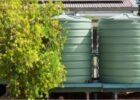One of the common challenges in construction projects is pouring concrete into narrow and congested spaces. A self compacting concrete mix is a suitable solution to this problem. This type of concrete can flow to hard-to-reach corners and compact on its own. Hence, there is no need to perform compacting with vibration using machines.


Various construction materials are combined to prepare self compacting concrete. We have explained each component in detail below. But before going through them, let’s have a look at what is self compacting concrete:
What is Self Compacting Concrete?
Self-compacting concrete is a highly flowable construction material that comes with the feature of self-compaction with its own weight. An SCC concrete mix can flow and reach corners and under-the-obstruction areas, which are normally not accessible to the workers. Besides, it eliminates the need to use vibration for maintaining homogeneity in the mixture and properly setting down the construction material.
Self-compacting concrete is prepared by taking the two main factors into consideration which are:
- Yield Stress
- Segregation
The yield stress must be low to ensure the concrete flows well. One of the common approaches to reducing yield stress is adding water to the concrete mix. But, it decreases the material viscosity, which leads to segregation (non-uniform consistency of concrete mix).
On the other hand, by adding a viscosity modifier, the desired material thickness can be achieved. But, it increases the yield stress. So, when making a self compacting concrete mixture, these two factors should be balanced.
Now, let’s check out the different components of self compacting concrete in detail.
Various Components of Self-Compacting Concrete
Coarse Aggregate
Aggregates larger than 4.75 mm are considered coarse. This type of aggregate is further divided into two categories: crushed and rounded.
Crushed aggregates help provide higher levels of strength as the angular particles interlock. But, the flowability of the material is compromised. As the particles are strongly connected to each other, the concrete mixture can’t flow easily.
On the other hand, rounded aggregates maintain good flow in the concrete because of less friction between particles. However, the overall strength levels of the mixture are reduced. So, an ideal approach is to use both types of aggregates in a balanced amount for the best results.
Moreover, the size of the coarse aggregates influences the overall mixture volume. If the size of the respective aggregate is large, their amount will be less, and vice-versa.
Sand (Fine Aggregate)
Aggregates ranging in the dimensions of 4.75-0.075 mm are termed fine aggregates. They are also known as sand. The sand used in preparing SCC concrete is comparatively fine than standard concrete. A suitable ratio of sand should be used with coarse aggregate. This ratio is low if the self compacting concrete mix is combined with the filler dust.
Fines
Construction material particles that are sized lower than 0.075 mm come into the category of fines (dust). Using fines is not essential for preparing a self compacting concrete mix if secondary cementing materials are used. For example, fly ash, silica fume, and ground granulated blast furnace slag (GGBS). Additionally, the finer constituents are, the fewer the chances of segregation.
Cement
There is one similarity between standard and self compacting concrete that the amount of cement used in both is the same. Among the various available variants of cement, the most suitable one is chosen by the respective ready-mix or onsite concrete provider. Moreover, by adding materials like GGBS, fly ash, and silica fumes; the quality of the self compacting concrete mix is enhanced.
Water
To ensure durability in the respective structure, the water-to-cement ratio should be the same as it is in standard concrete. Similarly, the water to concrete ratio is also fixed to prepare the concrete mix that has a good finish and high strength level.
Chemical Admixtures
Chemical admixtures are one of the major constituents of self compacting concrete. To enhance the workability of concrete, chemical components known as plasticizers are added at the desired stage during the batching process. One of the major admixtures is Polycarboxylic Ether (PCE). Other commonly used admixtures are viscosity modifiers. They help avoid concrete segregation and maintain fluidity in the construction material.
Key Benefits of Self-Compacting Concrete
Minimise Labour Cost
As the SCC concrete mix ranks high in fluidity, there is less labour required to pour and compact the concrete over the slab area. The workers just need to put the construction material from one end of the slab, and it gets evenly distributed all over the required area. Also, the self compacting concrete compacts on its own, so no heavy machinery needs to settle the mixture.
Smooth Surfaces
Self-compacting concrete provides a good finish and smooth surface to the respective structure. Thus, to get the self-compacting feature in the concrete, you don’t need to compromise on the appearance of the structure.
High Durability
As mentioned above, various constituents are used to prepare self-compacting concrete. They ensure a higher strength level, which keeps the respective structure intact for years. This way, SCC concrete helps facilitate durable construction solutions.
Easy Pumping
Due to high fluidity, the self compacting concrete mixture can easily reach corners and hardly accessible areas. Also, the material can be pumped seamlessly as it has the perfect consistency to flow which facilitates hassle-free concrete pouring.
No Vibration Needed
Standard concrete mixtures need to be treated with vibration using dedicated machines. This helps eliminate the air bubbles that remain trapped inside the construction material to provide it with uniform consistency.
But SCC concrete mixtures have a self-compaction capability that helps them effectively settle without being treated with vibration. This way, both the equipment charges and the labour are saved.
Conclusion
Self-compacting concrete is best suited for construction projects that demand the material to be poured in hard-to-reach areas. With components like aggregates, cement, water, and chemical admixtures, SCC concrete is a highly durable construction solution. Moreover, it considerably reduces labour expenses with its self-compacting capabilities. For achieving good strength and finish in the structures, you should get the SCC concrete supply from a reliable construction material provider.



